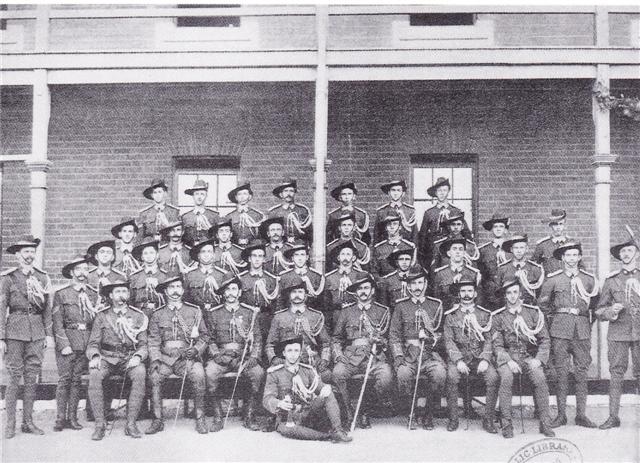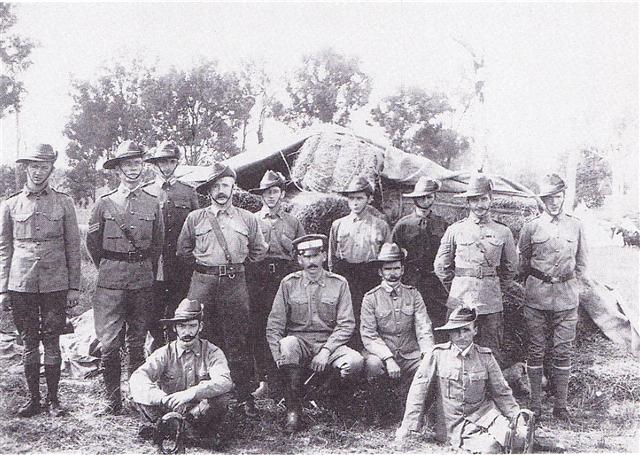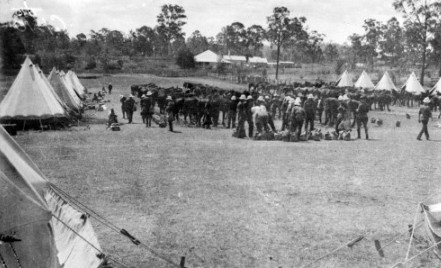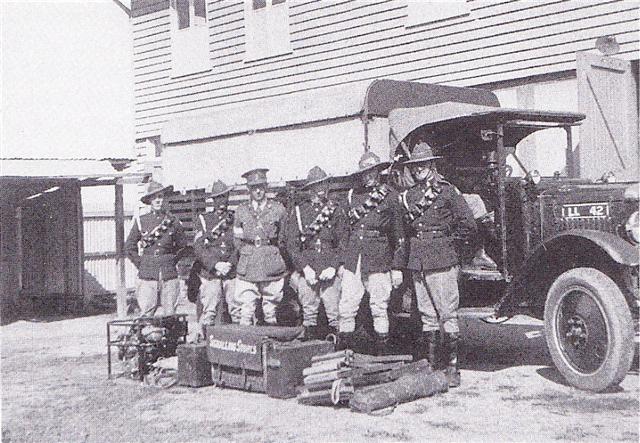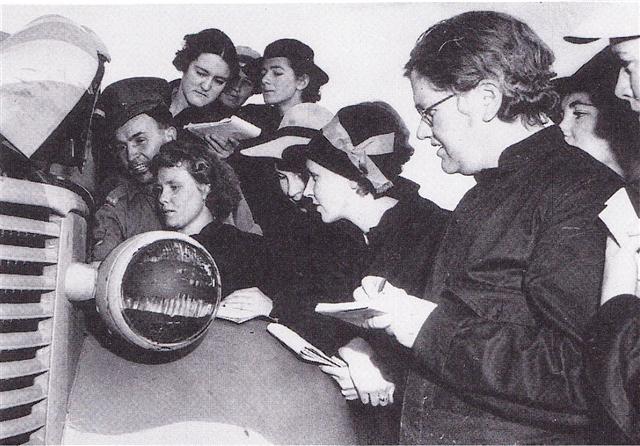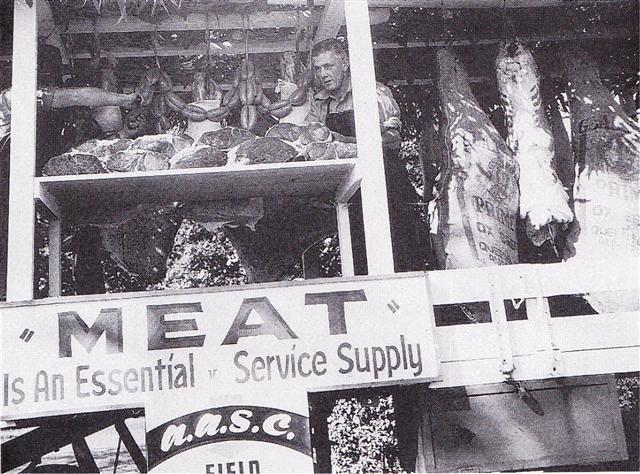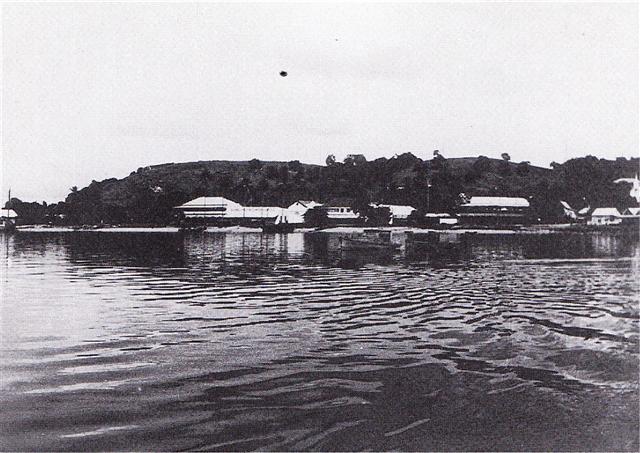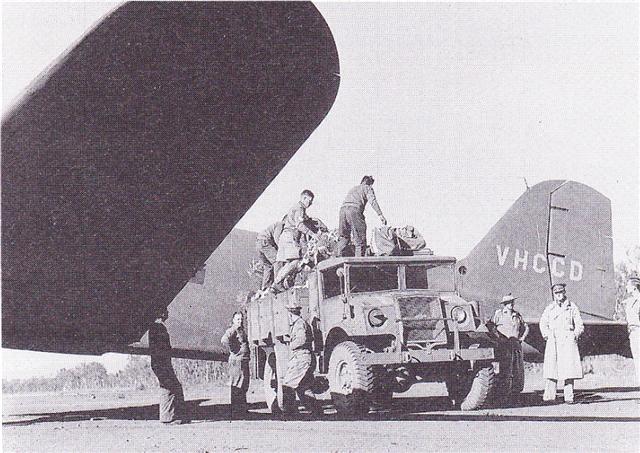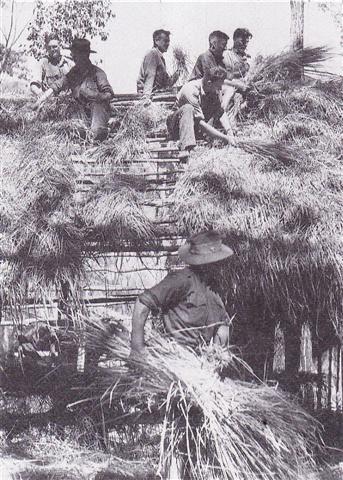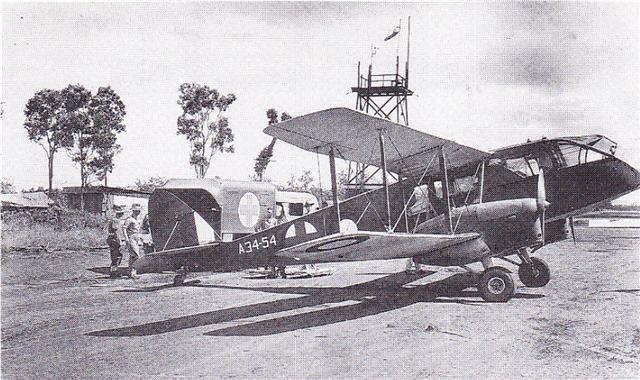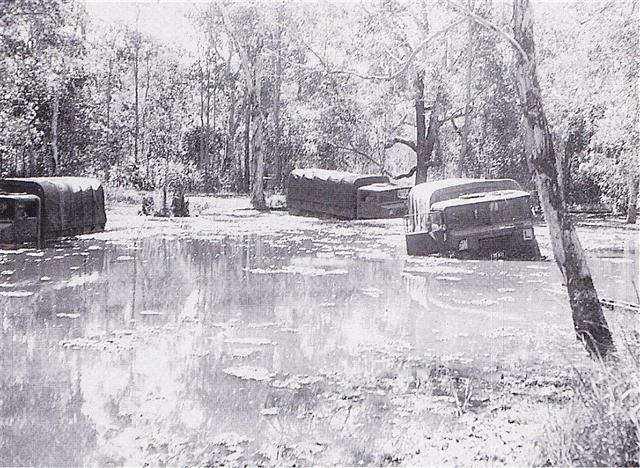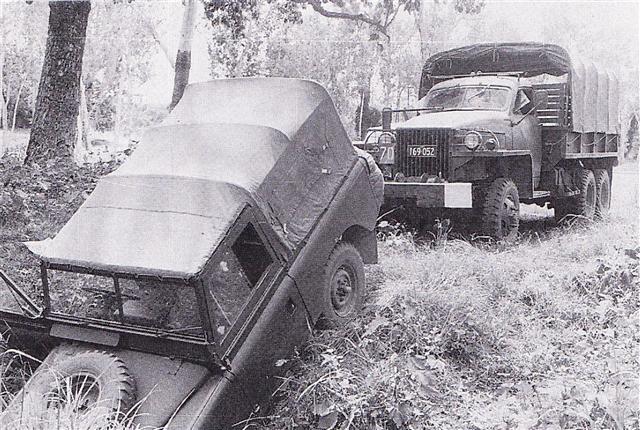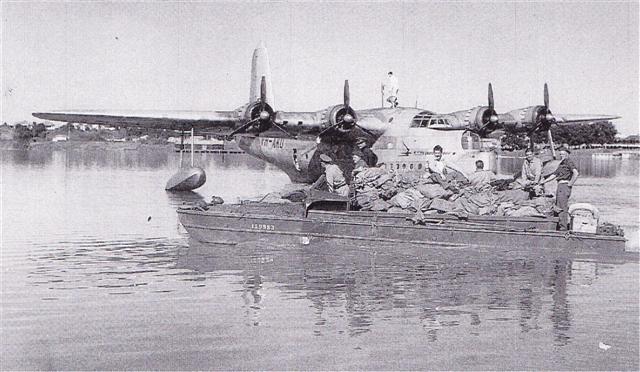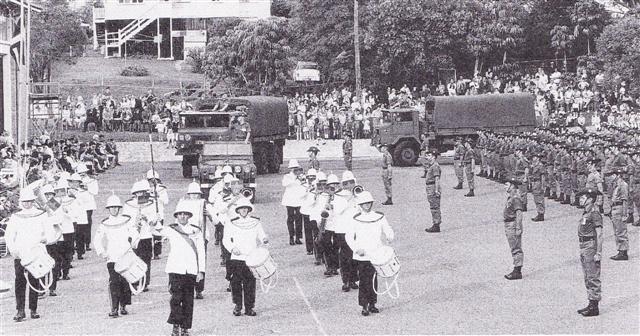Chapter 6
The Corps in Queensland
Improvisations and Inexpediency
The Colonial Defence Force in Queensland had not seen fit to raise a military supply and transport organisation as either a camp support agency or field force component. Furthermore, when Col G.A. French arrived from England as commandant in 1884 he found camps being fed by civilian caterers for three shillings per man per day and declared in his first report to the Queensland Parliament:
The Force in general seems to suffer on account of lack of interest on the part of the public. It appears to be fair game not alone for the big and little wits, but all the Government Departments.
The First Regiment is now, and has been for months past, without a Drill Shed; the Railway authorities having taken their shed and armoury for offices.
The Police hold the Military Barracks, though they have only a few men there.
The Immigration Department takes the Tents and Drill Sheds of the Volunteers.
The Post Office takes the Torpedo Cable.
The Lands Office sells or hands over our Rifle Ranges.
The Queen's Wharf and storehouses are taken possession by the Colonial Secretary's Department, and Ammunition and stores of the Force have to be carted at great expense to the Gaol or other places of refuge.
French was nothing if not persistent and able to combine political with military skills, talents which he brought to bear in New South Wales a decade later. He got the barracks back, some use of the commissariat stores and its wharf, and established his own magazines. He also banned the 'pernicious system' of caterers so that the Defence Force could establish its own means of food procurement, distribution and service, but establishment of a specialist supplies and transport organisation to effect this was beyond the resources allowed to him. As an expedient for militia camps regimental officers were impressed as movement control officers at railway and ferry terminals, the brigade major doubled as staff officer supply, a camp quartermaster operated a supply store, and A Battery permanent field artillery provided the transport, having first to recover the Force's carts from the prison on St Helena Island where they normally resided 1.
His successor Maj Gen J.F. Owen, acknowledging the necessity for such an organisation at the end of his tour in 1894, hid behind unavailability of funds, but the inescapable need to have a supply and transport mechanism of some sort made unavoidable the series of expedients which were more disruptive and expensive than the alienation of a few numbers from other units to form an Army Service Corps. Commandant Gunter in 1898 proposed a series of new establishments including an ASC of 70, but added the rider: 'The formation of an Army Service Corps is not a matter of immediate concern, and can well stand over until the Infantry is provided for'. But two years later, when about to be caught empty handed in the force he was to pass to the Commonwealth, he switched to the line that 'Hitherto no step has been taken to organise this important Arm of the Service' recommending a small permanent component and a militia company – too late of course for a state government shedding this responsibility 2. This continuing recognition of need but continuing avoidance of implementing a solution consequently carried over into the post-Federation interregnum, until incoming General Officer Commanding the Commonwealth Forces Hutton determined that two militia AASC columns and a Garrison Details should be raised to support the two brigades and garrison troops planned for Queensland Military District 3.
Had the Federal Government been able to find the funds immediately for the 5th Light Horse Brigade supply column and 3rd Infantry Brigade supply Column embodied in the 1903 organisation plan, this standing start would have made for some very difficult birthing pains. As it was, this was deferred, leaving the requirement for Queensland Garrison Details of five in Brisbane, one at Rockhampton and two at Townsville, a much more manageable starting point which masked the neglect of earlier years. Even the raising of those elements was deferred by budget pruning, not being authorised until financial year 1904-05; the required numbers had been raised by the end of the year by Capt A. Moon who had occupied the position of Staff Officer for Supply on the Force Head-Quarters, one of the expedients in lieu of an Army Service Corps which had been carried over as a stop gap into the Federal forces. Authority for 5th Light Horse Supply Column was given in 1905, and it was almost up to strength by the end of the following year. But the planned Hutton organisation was not completed until 3rd Infantry Transport and Supply Column was raised in 1911 4, by which stage Kitchener had set the scene for the regional Universal Training army, and the additional unit was simply part of a nation wide preparatory expansion to meet the need for more units to train and service the output of the scheme.
Both columns were raised in Brisbane – 5 LH Sup Col (in 1907 it became 5 LH T&S Col) was based at Victoria Barracks with Lt A.L.J. Madge commanding, 3 Inf T&S Col under 2Lt J. Murray at Kelvin Grove, Moon remaining until the war as Officer Commanding AASC 1 MD. Of the supported formations 3rd Light Horse Brigade was based on the Darling Downs, being railed to the field training area for annual camp, while 3rd Infantry Brigade was a Brisbane area unit. Camps were held in the standard Lytton-Ormiston-Cleveland training area established for the Colonial Defence Force 30 years earlier, where the well-established ad hoc ritual of transport to, supply and transport during, and transport from Easter Camp was now made easier with a properly organised supply and transport service. From 1909 Tamborine and Enoggera areas were also used on occasion for variety, the former placing some real challenge on the AASC Companies in maintaining the brigades away from the well-practised contractors of Brisbane. This was a matter which successive Inspector Generals had been pressing for some years, and is indicative of the seriousness which was accorded to having an Army Service Corps genuinely capable of supporting mobile operations. The other factor which accompanied such a requirement was the need for a ready supply of fit and trained horses for the expanding forces to be available for use by units in camp training, resulting in the establishment of a Permanent remount section at Enoggera in 1911 5.
Concurrent with the change to Universal Training in 1912, 3 Inf T&S Col was renamed 2 Coy and allotted to 2nd Brigade; and 5 LH T&S CoI became 24 Coy for support of 1st Light Horse Brigade; they absorbed the initial input from the Senior Cadets, losing progressively their volunteer soldiers who were not permitted to be re-engaged, although as is usual with a conscript influx, there was an early exodus of the volunteers. Successive annual inputs from the Cadets saw the raising of 3 Coy at Ipswich for 3rd Brigade in 1913 and 1 Coy at Townsville in 1st Brigade area in 1914. The spread of training liability for both Cadet and Citizen Force camps throughout both the year and the State, including responsibility for northern NSW, brought an end to the comfortable if repetitive camps with the original field force and garrison units. Now detachments of the Companies had to be provided at a wide range of centres: from 1907 at Lytton and 1911 at Lytton, Enoggera and Tamborine, this expanded in 1912-13 to Tiaro, Lytton, Emu Park, Hidden Vale, Warwick, Redbank and Kissing Point for the two companies, and the following year for the four companies, those plus Toowoomba, Pialba, Casino, Harrisville and Bowen 6.
Although allotted additional training days in recognition of their added commitments to both their own training and their support liability, the AASC Companies spent the majority of their time in providing camp support and little enough on their own technical and tactical training. In 1912, 2 Coy at least went to Lytton as a unit as weII as providing detachments elsewhere, but 24 Coy was simply split up to different locations; in subsequent years all companies were allotted for camps by detachments. In the T&S column days there was some time in camp to set aside for unit training, with a visiting instructor from the Permanent cadre in Sydney, but the demands of the Universal Training camps precluded this until strident criticisms from the Army's Inspector General resulted in an allocation of training staff to help shore up the situation. It was intended that there be an Assistant Director of Supply and Transport and staff on the Head-Quarters of 1st Military District to both formalise supply and transport operations and also assist in Corps training. Availability of staff restricted this to a warrant officer in 1913 and it was not until a month after the beginning of World War 1 that Maj A.L.J. Madge assumed the position 7. However hard a road this was, the problems were overcome, the level of training improved as the earlier universal trainees gained experience with successive camps, and increases to area instructional staff began to overcome the earlier ill effects of high turnover. Although the peak level of numbers and five-year stability of soldiers was not planned to be reached until 1917, by August 1914 the District Commander and inspecting officers agreed that the units were operating with dedication and a satisfactory level of proficiency 8.
The outbreak of World War 1 and the decision to form expeditionary forces from individual volunteers rather than Militia units volunteering en bloc resulted in Queensland's raising for the AIF 5 Coy, which was 1st Light Horse Brigade's Train, and part of one of two major lines of communication units, 8 Coy which was to be 1st Division's motorised Ammunition Park. In addition Lt-Col A. Moon, Commanding Officer of AASC in 1 MD, was sent to New South Wales to raise the other, 9 Coy, the motorised Supply Column. While the entrants to 8 Coy were sent south within two weeks, 5 Coy was formed on 20 August 1914 by Capt D.H. Berry at Harding's Paddock Enoggera and embarked on the Omrah and Anglo-Egyptian on 24 September 1914, joining the first convoy to what was intended to be England but ended up as Egypt. In the follow up contingents 17 Coy under Capt A.E. Harte was formed as 7 Inf Bde Train, later allotted to 2 Div Train, leaving for the Middle East in May 1915; components were also sent south to help make up 10 coy in October 1914, 13 Coy (1 Fd Bky, 1 Fd Bchy) December 1914; 19 Coy (2 Fd Bky, 2 Fd Bchy), 2I Coy (3 DUS), 7 and 8 Sqns of 2nd Remount Unit (November 1915); 23 Coy as part of 3 Div Train and a misnamed 29 Coy (11-15 DUS) in May 1916; and elements of 1, 2 and 3 Aux MT Coys in 1917. This completed the dedicated units raised in the State, further units being formed overseas from reinforcements and reallocations between units and other corps. However a continuing flow of reinforcements was trained at Enoggera AIF camp, these being sent forward either as dedicated to particular units or general allocation, though the final allocation to unit and corps was determined after arrival in depot in England and Egypt, depending on the needs at the time 9.
Foundation members of 5 Coy included two rising stars, Lt W. Stansfield and 2Lt H.A. Maunder, who quickly superseded their seniors, the former to become Commanding Officer AASC Egypt then of Anzac Mounted Division AASC and finally ADS&T of Desert Mounted Corps, recipient of the CMG and DSO, while Maunder became commander of Aust Mtd Div Train. Another name to become well known later in Queensland was Warrant Officer Glasgow, who ended the war as Capt D.R. Glasgow MC, then joined the Permanent forces to become a central figure in the AASC between wars. Also included in this draft was Lt G.M. Gibson of the Automobile Corps, one of several from various states who went overseas with the AIF and were absorbed into AASC units in Egypt 10.
While the major attention was with the AIF and overseas, there were two significant activities at home. The first was the ADS&T's responsibility for quartering, feeding and moving the AIF reinforcement units and drafts, which was effected using AASC units and members awaiting dispatch overseas, and AIF 'home service' volunteers unfit for operational service; additionally 1 MD MT Depot was raised using home service and civilian manpower and hired, gift and purchased lorries, cars and ambulances. AII these efforts were supplemented by the Militia companies putting in additional effort to cover periods of low AIF AASC transients. The second activity was the inexorable flow of Senior Cadet cohorts from Universal Training each year into the Militia. While a great number of the members of the AASC succumbed to the call or pressures to volunteer for service overseas, and the companies were depleted, this inflow plus those who did not intend to fight a European war began to outnumber those who did, as also happened with the Militia at large. During the depletion stage up to 1918 the companies remained unchanged except for 1 Coy extending its base from Townsville to include Rockhampton. Thereafter the overseas drain ended, and with the ongoing influx of 18 year old trainees there was an increase in units to hold them, causing a numerical reshuffle which was reflected in corresponding changes to the AASC companies. By the end of the war the Queensland units were 5 and 23 Coys at Brisbane, 17 Coy at Ipswich and 21 Coy at Townsville-Rockhampton. Further juggling of numbers and an additional company in 1920 had 1 and 8 Coys replace 5 Coy at Brisbane, which was the peak 11; the following year was one of reorganisation from the training brigade system to the seven-divisional mirror of the AIF, and a change in the numbering system of companies which unfortunately did not carry on either the AIF or AMF traditions.
Queensland's share of the postwar cake was the nominal 5th Division's nominal HQ 5 Div Train commanded by Lt-Col W. Stansfield CMG DSO – its 11 Bde S&T Coy was raised from 23 Coy at Kelvin Grove but the other 5th Division companies in Western Australia and Tasmania were not under his effective control. The other six Train Head-quarters were in Sydney and Melbourne, but part of those trains was also in Queensland to make up an adequate slice to match the three brigades – 4 Coy of 1 Cav Div Train which was raised at Toowong from 17 Coy, and 4 Coy of 1 Div Train from 1 and 8 Coys at Kelvin Grove, both also under command of Stansfield in his second and real role of Commanding ASC 1 MD. The Train was taken over by Lt-Col W.H. Berry DSO at the beginning of 1927 and faced the restructuring the following year in which the name divisional train was discarded and headquarters retitled, here to HQ ASC 5 Div. A further but interim renaming of divisional companies followed in which the two 4 Coys of 1st Cavalry Division and 1st Division were each retitled D Coy, while 11 Bde Horse Tpt Coy and 1, 2, 3 and 4 Depot Sub-Sections were raised and stationed at Kelvin Grove 12. Also in this year the end of conscription and onset of the economic depression combined to reduce the real size and training to a bare survival level.
Following the interim restructuring a two-company divisional AASC was effected in 1930, a supply company absorbing the existing four companies and the depot sub-sections, the horse transport company remaining. None of these was allotted to Queensland - instead the existing HQ ASC 5 Div, 11 Bde Sup Coy and 11 Bde HT Coy sufficed, Lt-Col L.J.B. Hartshorn now commanding. The subsequent mechanisation decision was reflected in the 1934 renaming of 11 Bde HT Coy to 11 Bde MT Coy, although the token three trucks ensured that practical work continued to be effected by horse wagon. A further change of command to Lt-Col W.C. Rankin, who remained until the outbreak of war, provided a continuing welcome variation in direction and space for promotion, one which was rare in 2 and 3 MD where AASC commanders held on to their fiefs for terms extending up to a stultifying fourteen years during which initiative and rising talent were stifled. Four years later, in a significant expansion of the Militia, and following in the steps of the RASC regression to commodity units, divisional units were formed into a divisional supply column and divisional ammunition company of which 1 MD scored B and E Secs of 2 Div Sup Coln, C and D Sects of 1 Div Sup Coln under command of a HQ ASC 1 MD which also commanded the other divisional units plus 11 Bde Sup Coln and 11 Bde Amn Sec; at this stage the half-reality of 5th Division was finally discarded, and HQ ASC 5 Div dropped off, leaving HQ ASC 1 MD in its place 13. This chopping and changing expansion, contraction and expansion was countered by experienced commanding officers whose four year terms balanced stability with a periodic fresh approach and encouragement of oncoming talent, and the fact that such an able, experienced and unflagging Adjutant and Quartermaster as D.R. Glasgow filled the post from 1922 to 1939.
In the 1st Military District Base the Permanent staff position, alternately termed ADS&T, Staff Officer S&T and ADST, was occupied briefly by Glasgow in 1920, then by Capt/Maj L.J. Kimber from 1922 until his retirement in 1939 and replacement by Glasgow. Under his control was a Permanent S&T Section comprising a Horse Transport Section at Victoria Barracks plus the Remount Section operating No 1 and 2 Remount Depots at Lytton and Enoggera. The Permanent staff establishment was augmented in 1927 with a Militia Deputy Assistant Director of Supply and, to underline claims to mechanisation based on the initial one 30 cwt Thornycroft lorry held by the Horse Transport Section for 11 Bde S&T Coy, a Deputy Assistant Director of Mechanical Transport position was created. This DADT(MT) position was filled eventually in 1934 by Capt S.N. Wood who also commanded the fledgling Permanent MT Section whose vehicles were used for domestic tasks during the week, then by all arms units for training at weekends, continuing demands which stretched both men and machines. Militia units 1 MD Remount Tp and a restricted 4 Sup Pers Coy were raised in 1938 as a mobilisation base and to supplement the Permanent unit capacity to support the camp activity of the expanding Militia 14.
On the outbreak of war in September 1939 the Militia was called into camp for a continuous training period, half at a time. Hiring of vehicles for the rapid mechanisation of the Army was effected by 1st Vehicle Collection Centre which deployed sections to Cairns, Townsville, Rockhampton and Kedron Park Racecourse, hiring and dispatching what they could get of their quotas to Northern Command Vehicle Reception Depot at Enoggera for painting, repair and issue to units. The inevitable shortfall of vehicles available for voluntary hire from a civil community itself not over-supplied by motor transport was in part remedied by raising 1 Aux HT Coy at Enoggera, and 2 Aux HT Coy at Selheim Camp near Charters Towers to service the North Queensland training camps. The continued need for horsed transport in static base units as well saw an enhanced role for the remount organisation which purchased additional horses and continued to operate from the depots at Lytton and Enoggera; Colonel W. Stansfield made a brief reappearance from the retired list as Assistant Director of Remounts until a policy decision to dispense with the service of retired officers was made in 1940, after which he continued to serve in a quality surveillance role for defence production with the Department of Treasury Business Board Inspectorate 15.
Queensland was also allocated its portion of units to raise for the second AIF. Most of the first two divisions raised were embodied in New South Wales and Victoria, the other states recruiting quotas on a population basis and sending them to join the parent unit, except where there was a particular strength in a specialised field in a state, when a unit or sub unit was raised Iocally. Queensland's men for 6 Div AASC were assembled at the AASC Training Depot at Redbank and joined 6 Div Sup Coln at Ingleburn at the end of 1939; subsequently contingents went to Greta for 7 Div Amn Sub-Park in mid-1940, and in late 1940 to Dubbo for 6 Div Amn Sub-Park. Units and sub-units raised in Queensland were 1 Corps Tps Sup Coln and 2/1 MAC in May 1940, 8 Div Amn Coy in July, 8 Div Amn Sub-Park at the end of the year, and for 1st Armoured Division, the Pet Wing 1 Armd Bde Coy in January 1942 and 1 Armd Div Tps Coy in April 16.
As the defence of Australia was an increasing imperative rather than the decreasing one it had been in the previous war, and as Queensland was in the forefront of risk, it might have been imagined that a substantial field force element would be maintained to protect it. This was hardly the case. The Brisbane Line mentality kept the Militia divisions stationed in NSW and Victoria while the local 1st Cavalry, 7th and 11th Infantry Brigades covered the Brisbane and Townsville areas. Supporting them as divisional and corps troops at the Japanese entry to the war were HQ N Comd AASC, N Comd Sup Coln, N Comd Amn Coy, N Comd Pet Coy, N Comd Amn Sub-Park and N Comd Pet Park located at Enoggera. In general support were 105 Res MT Coy also at Enoggera, 115 Res MT Coy spread between Charters Towers, Rockhampton and Cairns, 1 Amb Car Coy at Bundamba, N Comd MAC at the Exhibition Grounds, 4 and 10 Sup Pers Coys with additionally 1 Fd Bky at Enoggera awaiting deployment to other areas as required, and N Comd BIPOD also at Enoggera. Raising of the AIF, then the calling up of the Militia units to full time service after Japan's entry to the war, required the establishment of HQ AASC Trg Depot N Comd (later Qld L of C Area, then finally 1 AASC Trg Bn) with 1 and 2 Trg Coys for basic training of recruits, first at Redbank, then moving to Goondiwindi in March 1942. This establishment effected basic and technical training of the flood of recruits required to bring units up to strength and for the burgeoning number of AASC units; an all arms MT School was also operated at Annerley, and as a rationalisation, the Remount Section and Militia Remount Troop were amalgamated into 1 Rmt Sqn 17.
While there had been little intention of turning an invasion of Australia back in Queensland, when the Japanese thrust had been turned back in Papua Queensland became popular as a training area for divisions preparing for the campaigns in Papua New Guinea and the Islands, peaking at a corps of three divisions on the Atherton Tableland and 11th Division in Torres Strait in late 1944. This generated very considerable traffic to and from the south for leave, reinforcements, casualties and rehabilitees, courses at Jungle Warfare School Canungra and other schools in NSW and Victoria, and in maintenance of the force. Provision also had to be made 3rd Armoured Division and 3rd Division when they trained in south Queensland and northern New South Wales during 1942-3 and the build up of 1 Base Sub-Area units near Brisbane in late 1944 for deployment to the Borneo operations. In consequence some substantial increases in lines of communication AASC units were necessary: by 1943 the Reserve MT companies were replaced by 111, 112 and 113 GT Coys, the Ambulance Car Coy remaining unchanged; a range of base supply depots was established to serve national requirements and for each major area of concentration – 2/1 and 5 BSDs for Army stocks; and for Queensland L of C Area stocks, BSD Cabarlah, DSD Redbank-Enoggera, DSD Selheim, DSD Emerald; 1 Fd Bch Coy, 2/1 Fd Bch Coy, 2/2 Fd Bky and 8 Fd Bky and 2/l Army Pet Dep were added. These were converted in the mid-1943 brick reorganisation to 2/1 BSD, and 4, 23, 27-32 Sup Dep Coys commanding 160-163, 169 and I90-221 Sup Dep PIs which latter were located throughout the State in troop concentration areas – unavoidable overheads, at least for the periods of maximum activity 18.
With the threat of Japanese forces in Dutch New Guinea the garrison at Thursday Island was expanded and, together with a force building up to a brigade group established at Merauke in Dutch New Guinea, attracted Headquarters 4th Division to command the area. The original small AASC element at Torres Strait expanded also, and by the time of arrival of HQ Comd AASC 4 Div in August 1943, detailed issue depots were established at Thursday and Horn Islands, Jacky Jacky on Cape York and Merauke, supporting a total of over 12,000 troops. This liability was handled by 159 GT Coy, 19 Sup Dep Coy (46, 47, 106, 223 Sup Dep Pls) and 46 Fd Baking Pl in the Torres area, and 157 GT Coy, 222 and 238 Sup Dep Pls, 45 Fd Baking Pl and 51 BIPOD Pl at Merauke. Unit farming projects were formalised by the arrival of part of 7 Farm Coy at Cowell Creek Mission in 1943, however this was discontinued in late 1944 as part of a run down of the force. A late addition formed locally in April 1944 was 4 Marine Food Sup Pl but its operations were never effective for want of equipment until too far into the force reduction. In October 11th Division relieved 4th Division which was then disbanded, HQ 11 Div AASC inheriting the residue of a transport platoon, supply depot platoon and bakery detachment at each of Thursday Island and Merauke until it was transferred to New Britain in mid-1945 as part of the relief of HQ 5th Division there 19.
Activities in north Queensland were initially centred on the Mount Isa railhead with a supplementary road haul supporting Northern Territory Force, described in Chapter 12. The focus then switched with the arrival of two brigades at Townsville in May 1942 followed by the returning Middle East divisions which, after landing at Adelaide, were being assembled in the north for acclimatisation and training for tropical warfare. Pressure generated by the Japanese capture of the north coast of Papua and New Guinea and advance through Kokoda drew 7th Division into Papua almost immediately, then 6th Division. But the toll of the campaign resulted in the progressive return of each of the divisions committed there for recuperation, reformation and retraining, plus 9th Division on its return after the Alamein battle in North Africa. Blamey's desire for a northern base for training and recuperation for the New Guinea operations, and to have a centre which kept such a large concentration of men away from the potential troubles of population centres, led to selection of the Atherton Tableland, originally planned for two, then three divisional base areas at Ravenshoe, Wondecla and Kairi, the occupation of which commenced in early 1943. Initially Headquarters 2nd Corps was set up to control these divisions, then replaced by 1st Corps as the 3rd, 5th and 11th Divisions replaced the 6th, 7th and 9th which were to refit and prepare for amphibious operations in the expected foray to the Philippines with US forces. The north of the state became a vast training ground for tropical warfare plus specialist training on the coast for amphibious and jungle operations. Some of the divisions spent over a year at a stretch there, and developed a considerable semi-permanent infrastructure.
Immediate support of these formations was provided by their integral divisional AASC and corps troops as a normal part of their responsibilities, but a considerable base infrastructure, involving many of the units mentioned previously, was required both for bulk holding of stocks and to provide supplies and transport, in an area stretching from Cairns to Ayr, in support of the divisions' deployments for training exercises along the coastal jungle strip and beaches. For over two years, as the campaigns in New Guinea ebbed and flowed and preparation for those in the Islands developed, the State was the hub of preparatory activity as the divisions cycled through the Atherton training camps. When the forces were finally launched into the 1945 operations this activity subsided dramatically, and with it the camps and AASC base area commitment waned and ended 20.
Reconstitution of the CMF in 1948 included an administrative headquarters as had happened in the past. If Queensland had not been able to get a real divisional AASC slice when there were six Militia divisions, there was even less chance when there were only two. HQ N Comd Tps AASC was established at Annerley by Lt CoI K.W. Lawrence OBE to command 5 Coy, 1 BSD, HQ 139 Fd Bchy Coy, 139 Fd Bchy Pl, 22 Cold Storage Dep Pl and 20 Fd Bky Pl, with 102 Coy at Toowoomba and 110 Coy at Gympie; in support of 11 Bde at Ingham was 111 Indep Tpt Pl and 112 Sup Dep Pl. These units were built up progressively by the enthusiasm of their leaders, exemplified when 102 Coy was relocated to Annerley in 1954 by the speed with which OC Maj E.T. Lenton re-recruited the unit to effective strength. Introduction of National Service in 1951 had the usual results: an influx of basically trained and less than motivated soldiers, and an exodus of the much smaller number of enthusiastic volunteer soldiers. Northern command Troops moved to a new depot at Fraser's Paddock Ashgrove, where successive COs Lt Cols A.S. Vivian and T.P. McManus carried the brunt of meeting this challenge. With the boost of National servicemen the organisation was fairly bulging at the seams: 5 Coy, 102 Coy, 1 BSD and 110-115 Sup Dep Pls at Ashgrove, 18 Pet Pl at Sandgate, 110 Coy at Gympie, and 111 Tpt Pl now moved to Townsville, a gross strength of 1200, though effectiveness was another matter 21.
The source of these recruits was 11 NS Training Bn at Wacol. This unit included G Coy which handled the RAASC trainees, bringing them to recruit Ievel with a smattering of driving training for those with previous experience. When transferred to their CMF unit to complete the three year active service obligation they presented a mass training liability which inhibited their absorption into the trade streams of the units: the fishermen of Sandgate were a long way from being petroleum operators, and the high non-licenced driver element of the transport companies inhibited effective tactical training at annual camps, a situation strongly reminiscent of the Kitchener era though for different reasons. There was, at least, a strong training programme for officers and NCOs, with each Monday night and continuous courses devoted to producing an adequate supply of good leaders for the units. However the pentropic restructuring of 1960 and simultaneous end to National Service solved these problems by reducing the liability all round, and ending with 2 and 41 Coys, 40 Tpt Pl (amphibian) and 110 Sup Dep Pl at Enoggera, and 107 (later converted to 4) Coy at Townsville; replacement of a headquarters did not come until 1968 in the form of HQ 10 ST Colm 22. The end of National Service also substituted other problems – re-recruiting units by voluntary enlistment and internal training of the new recruits whose high turnover reproduced the problems of the more numerous but longer serving compulsory members.
The initial ARA component in Queensland, for base support of the small ARA elements, comprised 101 Sup Dep Pl and 101 Tpt Pl, plus cadre staffs for the CMF, controlled by a DADST on Headquarters Northern Command. The expansion in 1951 required a substantial training component of instructors for the National Service basic training unit, then later incremental increases for a regular battalion, Jungle Training Centre and Papua New Guinea. The Pentropic battle group stationed at Enoggera in 1960 brought with it the first element of Regular field force units in the shape of 3 Tpt Pl and 52 Sup Pl at Enoggera, which in the Vietnam war expansion were absorbed into 26 Coy, shortly destined for Vietnam and replaced by 9 Coy then 18 Coy, the latter replaced by 5 Coy on its return from Vietnam in 1971; these companies had the functions of training members for the annual turnover in Vietnam, supporting Task Force training and battalion pre-Vietnam exercises at Shoalwater Bay training area. Opening of the new Task Force base at Townsville in 1969 resulted in 9 Coy and 1 Comm Z Postal Unit relocating there. The latter area also had installed 111 Sup Dep Pl, 394 Tpt Pl and NQ Area Postal Unit as the base support element. The general support units for south Queensland were now 3 Sup Dep which was a mixed ARA/CMF unit, and 102 Coy 23. The DADST position was converted to CRASC Northern Command in 1965, but the progressive introduction of area headquarters, under which the base units were placed, steadily eroded the relevance of the position from the beneficial command authority and control of resources which HQ CRAASC had been designed to exercise.
A major expansion of Jungle Training Centre at Canungra, caused by the decision that everyone allotted for duty in Vietnam must complete a battle efficiency course at the Centre, imposed a heavy transport and supply workload which was well beyond the creaking unit transport pool. The solution was first 393 Tpt Pl then, as the commitment grew exponentially, 109 Tpt Coy was raised in 1969 and placed under command of the Centre to provide a fully responsive system of meeting the Centre's needs 24. This was a considerable departure from the usual RAASC dictum of retaining control of units under Corps control, but this solution was the only one likely to meet the reservations of JTC on surrendering its own transport, and successive OCs of the unit Majs R.G. Whitehead and D.L. Childs and J.B. Humffray made it work to the satisfaction of all parties.
It was, for the Army as well, a unique example of pooling of transport which was still resisted strongly elsewhere. That resistance was epitomised in a trial conducted at the 3rd Task Force base at Townsville where all vehicles other than field establishment ones were withdrawn and all administrative tasks centralised into 394 Tpt Pl controlled by the DADST. The trial was successful in all reasonable tests and brought into longer term use, but was progressively bypassed and debased until it became an example of failure. This was not one of inability or unwillingness of the RAASC transport unit but rather a product of supported commanders wanting to have their own puddles rather than an effective and higher capacity pool; the success at Canungra was not repeated at Townsville simply because of those differing attitudes of command.
With the decision to redistribute the responsibilities of RAASC, CRASC Northern Command became Chief Transport Officer, then Chief Transport and Movement Officer. The staff functions of Movement and Removals were absorbed, and preparations made for formal transfer of units and members. At a parade at 11 Sup Bn on 30 May 1973 the supplies and clerical part of the Corps was absorbed into RAAOC. On 3 June Maj Gen S.C. Graham DSO OBE MC, General Officer Commanding Northern Command and former member of AASC, reviewed a parade of the RAASC transport component in South Queensland – 2 Coy, 5 Coy, 41 Coy, 109 Tpt Coy, 40 Tpt PI and 392 Tpt Pl, which were joined by 11 Movement Control Group and 32 Small Ships Sqn from RAE to form the RACT in South Queensland. A similar parade was held in Townsville including 4 Coy, 9 Coy and 394 Tpt Pl for the North Queensland component. For the Corps in Queensland, after 68 years, another era had arrived.
Footnotes
1. V&P Qld LA 1884, Special Report of Commandant on the Queensland Defence Force, p659.
2. Queensland Government Gazette No 77 14 April 1894, p901-2; AA B133 No 1 of 20 February 1898, 16 March 1900.
3. See Appendix 3.
4. CPP 1903 vol II Scheme of Organisation, p12-14; 1907-8 vol IV Military Board Report, p12; GO 72/1903; 42/1904; MO 2/1911.
5. MO 3/1907, 97/1909; CPP vol II 1903 Scheme of Organisation, p18; 1912 vol II Kirkpatrick Report, p16; 1911 vol II Kirkpatrick Report, p24; MO 189/1913.
6. MO 293/1912, 428/1912, 446/1909, 57/1912, 650/1912, 555/1912.
7. MO 650/1912, 555/1913; CPP 1912 vol II Kirkpatrick Report, p16; AA J1795 No 3 Records of Service.
8. CPP 1914 vol II Hamilton Report, p41.
9. Report upon the Department of Defence 1914-17 Part 1, p73-4, 76; AWM 224 MSS 210, 218, 222.
10. Truswell T.A.D. A Nominal Roll of the First Queensland Contingent AIF to the Great War 1914, p14; Lindsay N.R. 'Early AASC Leaders' Portraits of Queensland, Soldiers.
11. Report on DOD Part 1, p276, 294-6; MO 1/1915, 150/1919, 103/1920.
12. MO 95/1921; Army List 1921, 1927, 1929.
13. Commonwealth Year Book 1930, 1934, 1938; CYB 1929, p576; Army List 1937, 1940; AA MP729/6 37/401/79 Appendix Z.
14. Army List 1920, 1922, 1927, 1934; AA 81535 763/2163 QMG on Military Board Agenda 2/32; AA MP729/6 37/40L/79 Appendix Il; Permanent Military Forces Annual Establishments for 1939-40 Table 8A.
15. AWM 54 199/2/5 Maintenance Organisation September 1941 Appendix A, p1; Army List 1940.
16. AWM 52 10/2/23, 10/7/1; AA MP729/7 37/421/447, 37/421/488.
17. AWM 54 199/2/5 Maintenance Organisation September 1941 Appendix A, p1; AWM 52 10/43/6.
18. Army ORBAT October 1942-June 1943; Dexter D. The New Guinea Offensives p15-16.
19. AA MP729 /6 42/401/741 of 18 September 1944.
20. Wilson P.D. North Queensland WWII 1942-1945, p12-15.
21. AWM 51 146 Army ORBAT 1948/49: AA MP729/8 37/432/106; Vivian A.S. 'The History of the AASC' We Serve 1955; AA MP729/8 37/432/106 CMF Expansion 1951-56; 'History of the RAASC CMF Northern Queensland' RAASC Digest 1971, p112.
22. Army ORBAT 1958, 1960, 1963; 'RAASC CMF Northern Queensland', p112; RAASC Digest 1967-71.
23. AWM 54 703/5/1; Army ORBAT 1948, 1958, 1960, 1963; RAASC Digest 1967-71.
24. Whitehead R.G. 'Transport Coordination for JTC' RAASC Digest 1971, p105f.
